- Maria Isabel Torres, Program Director of Mongabay Latam, has spent nearly a decade shaping the bureau into a regional leader in environmental journalism, building a cross-border newsroom recognized for investigative depth, collaboration, and a deep commitment to public-interest reporting.
- Drawing from a background in political journalism, anthropology, and environmental policy, Torres has built a multicultural team spanning seven countries, fostering a values-driven culture grounded in empathy, resilience, and shared purpose.
- Under her leadership, Mongabay Latam has become an innovator in using satellite data, AI, and investigative tools to expose environmental threats, while amplifying underrepresented voices—especially women and frontline defenders—with a steadfast focus on impact and integrity.
- Torres spoke with Mongabay Founder and CEO Rhett Ayers Butler in July 2025.
As Mongabay continues to expand its impact across the globe, few leaders embody the spirit of its mission more fully than Maria Isabel Torres, the Program Director of Mongabay Latam.
Based in Lima, Peru, Torres has spent the past nine years not only overseeing the daily operations of Mongabay’s Latin American bureau but shaping its very identity. Under her leadership, Mongabay Latam has grown into a regional powerhouse for environmental journalism, recognized for its investigative rigor, its collaborative ethos, and its unflinching commitment to spotlighting some of the world’s most urgent environmental challenges.
This interview with Torres is part of Conversations with Mongabay Leaders, a series that dives into the experiences and insights of individuals driving change within our organization. Torres’s story is one of vision, resilience, and an unwavering dedication to journalism as a force for accountability and empowerment.
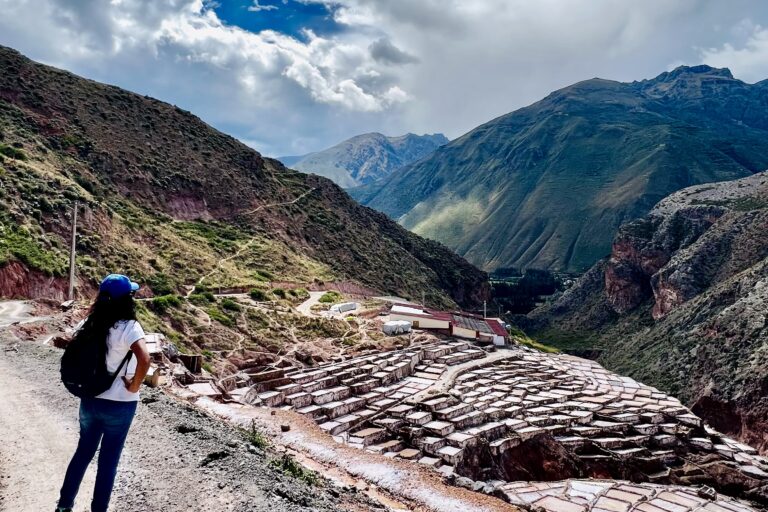
Torres didn’t set out to become an environmental journalist—her early career was rooted in political journalism during one of Peru’s most tumultuous eras. Inspired by investigative reporting that exposed corruption and abuses under the Fujimori regime, she developed a deep respect for journalism’s potential to serve the public good. A detour through the NGO sector and a stint at Peru’s Ministry of Environment opened her eyes to the complex intersections of environmental and political issues, ultimately laying the foundation for her return to journalism with a new focus: the environment.
When the opportunity arose to lead Mongabay’s Latin America initiative, Torres seized it—not simply as a job, but as a chance to build something transformative. Her background in anthropology, combined with her deep regional knowledge and journalistic instincts, positioned her uniquely to craft a newsroom that transcended national boundaries. She envisioned Mongabay Latam not as a traditional outlet, but as a collaborative, cross-border platform that could report on Latin America’s environmental realities with context, depth, and nuance.
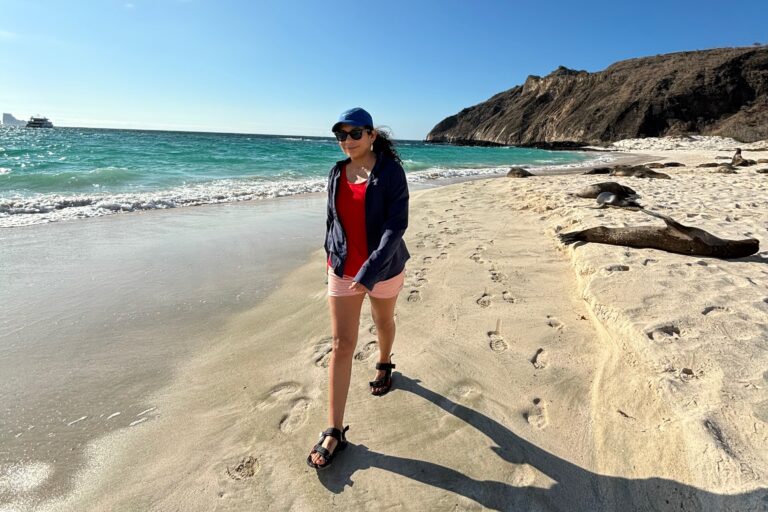
What sets Torres apart as a leader is her ability to nurture both talent and purpose. She has built a multicultural, multidisciplinary team that spans seven countries and works in close collaboration with more than 90 partner media outlets. She emphasizes not just technical skill but alignment with Mongabay’s values and mission. Her leadership style is rooted in empathy, clarity, and mutual respect—qualities she believes are essential to building a thriving, resilient newsroom.
Yet for Torres, the heart of the work remains people: those who are risking their lives to defend land and biodiversity, and those who trust journalists to tell their stories with dignity and accuracy. She is especially committed to amplifying the voices of women—journalists, scientists, Indigenous leaders—whose contributions too often go unrecognized.
As Mongabay Latam approaches its 10th anniversary, Torres is thinking deeply about the future: how to innovate, how to grow, and how to continue fostering a culture of safety and integrity in a region where journalism can be both essential and perilous. Through all of this, she remains motivated by curiosity, learning, and the belief that journalism—done with care, collaboration, and courage—can indeed change the world.
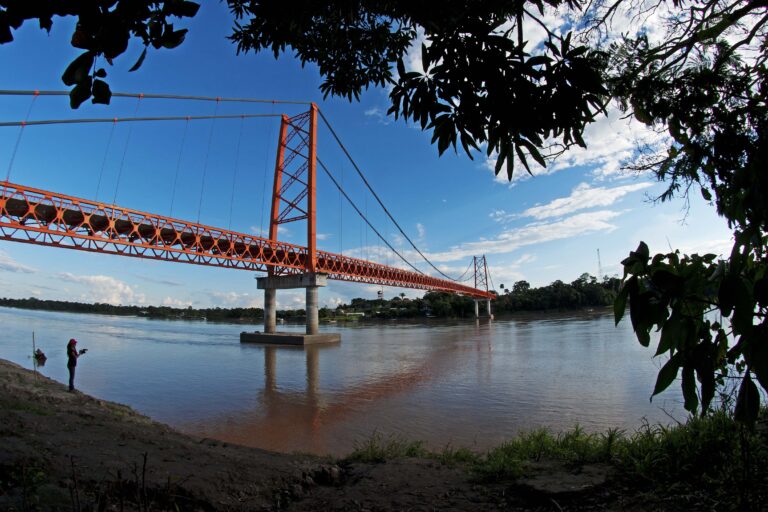
In this conversation, Torres reflects on her journey, the challenges and triumphs of leading a regional newsroom, and the lessons she’s learned about journalism, leadership, and impact. It’s a powerful portrait of a leader who is not only building a legacy—but also helping others build their own.
An interview with Maria Isabel Torres
Rhett Ayers Butler for Mongabay: Could you introduce yourself and your position at Mongabay?
Maria Isabel Torres: My name is Maria Isabel Torres. I’m a Peruvian journalist based in Lima, and I’m the Program Director of Mongabay Latam. I’ve been in this role for the last nine years.
Mongabay: What does your day-to-day work at Mongabay Latam look like?
Maria Isabel Torres: My days are quite busy and exciting because Mongabay works on many things simultaneously. In addition to our daily and weekly coverage, some teams are working on long-term investigations and special reports. We also have two fellowship programs in development and a training area for journalists.
I’m also focused on building partnerships with media outlets across the region. So, part of my time goes into coordinating these efforts and developing strategies to reach our goals. The other part involves reviewing budgets, donor reports, and supporting the global fundraising team—always looking for new ways to grow Mongabay.
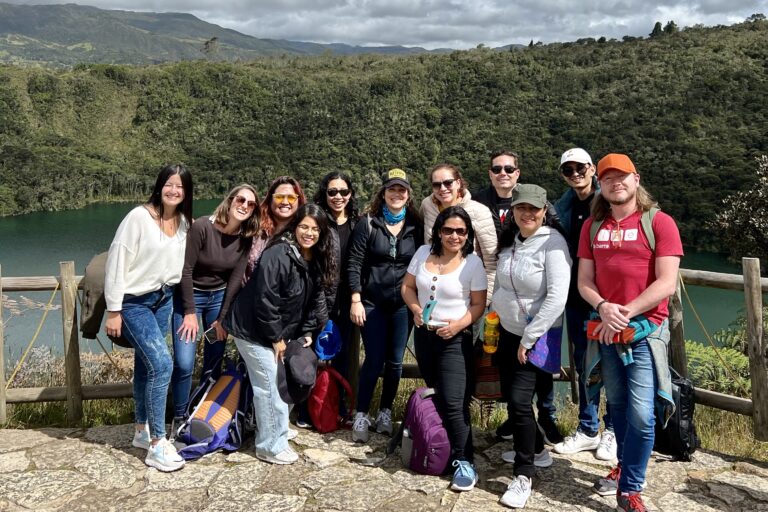
Mongabay: And what did you do before joining Mongabay?
Maria Isabel Torres: It’s been an interesting journey. I started my career working for a well-known political TV program in Peru. After nine years, an opportunity arose to practice independent journalism, and my colleagues and I all resigned. At the time, I thought journalism was over for me.
I then worked in the NGO world and in government, including in the communications office of the Ministry of Environment. That experience was valuable—and stressful—but it gave me my first real exposure to environmental issues.
While doing my Master’s in Anthropology, I assumed journalism was part of my past. But that’s when the opportunity with Mongabay came up—and here I am.
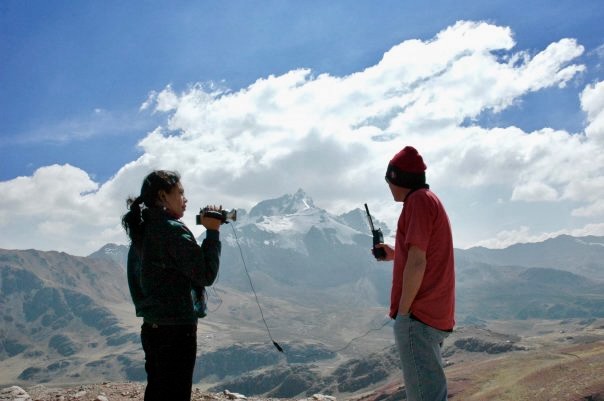
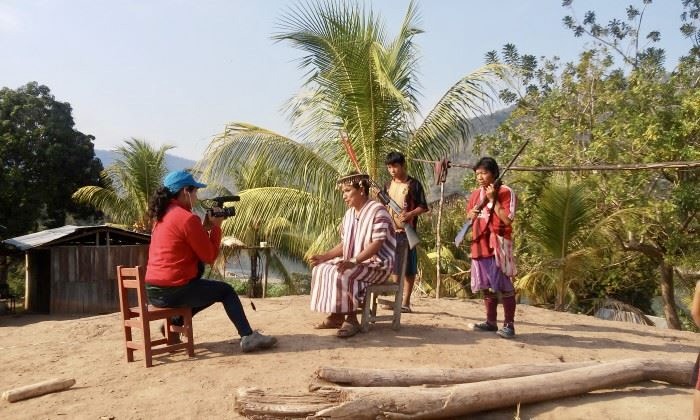
Mongabay: What went through your mind when the Mongabay opportunity appeared?
Maria Isabel Torres: I saw it as a chance to return to journalism. I was finishing my Master’s in Anthropology, focusing on Amazonian studies—which is a fascinating field. I was familiar with Mongabay’s reporting, but I didn’t know about their model of empowering local journalism by establishing regional offices.
At the time, Indonesia was the only one, so I read about their work there and what they had achieved. I believed we could do something just as impactful in Latin America. I was excited not only about doing journalism again but about covering the entire region.
Mongabay: Why did you originally decide to get into journalism?
Maria Isabel Torres: I was deeply influenced by the political situation in Peru during my university years. We lived under the Fujimori regime, which tried to illegally remain in power.
I remember reading investigative journalism pieces that exposed corruption, human rights abuses, and paramilitary groups—despite the risks. That inspired a deep respect in me for the power of journalism.
In Latin America, journalism has played a key role in exposing injustice and inequality. I wanted to be part of that, to tell those stories. I’ve always viewed journalism as a public service—and I’ve seen how it can create real change. Even when we’re pessimistic, sometimes journalism does shift things in our reality.
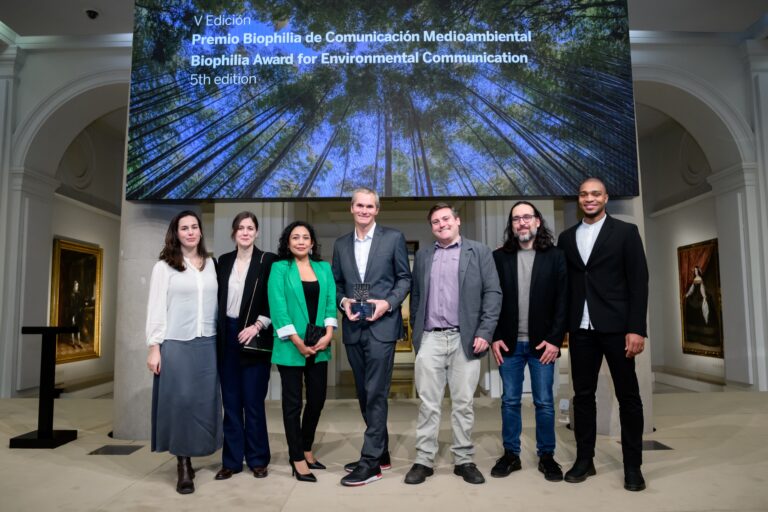
Mongabay: What are you most proud of in your work?
Maria Isabel Torres: There are many things, but I’d say three in particular.
First, I’m proud that we’ve developed a regional perspective—understanding Latin America as a collection of interconnected countries with distinct but related challenges.
Second, I’m proud of the collaboration we’ve built. We work with more than 90 media outlets across the region, many of which republish our stories. That shows the growing interest in environmental issues in Latin America.
And third, I’m proud of our team—how they’ve been interviewed by other outlets, won awards, and gained recognition. We’ve created a space where Mongabay Latam is seen as an important media outlet, and our team members are also being individually acknowledged for their work.
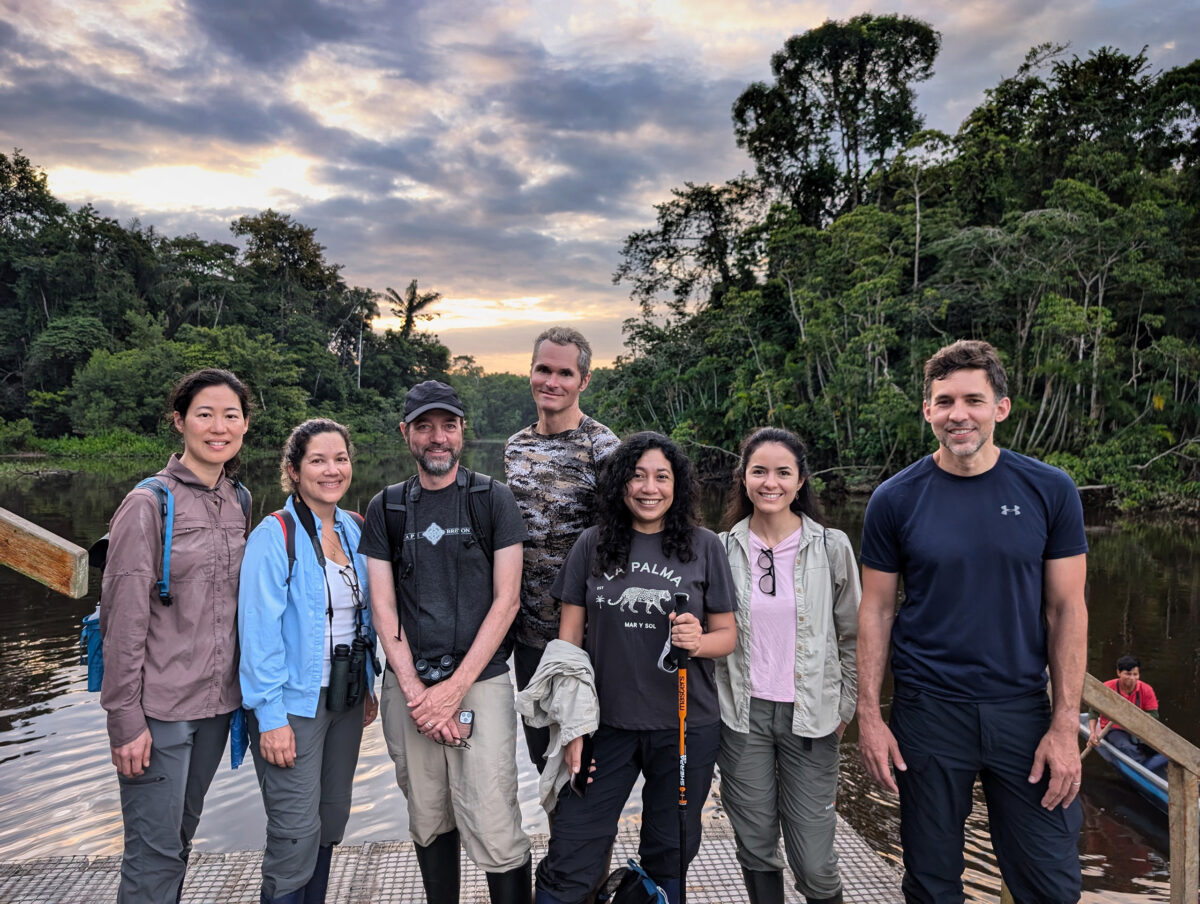
Mongabay: Is there a particular project or story you’re especially proud of?
Maria Isabel Torres: Yes, several. One key area we’ve developed is the use of satellite analysis tools to understand how territories are being transformed.
We’ve done work in Colombia and Peru to show how Indigenous territories and protected areas are being affected by illegal mining, deforestation and coca cultivation. We’ve also mapped environmental liabilities from the oil industry in Ecuador, Colombia, Bolivia, and Peru.
We use tools like Global Fishing Watch to monitor activity on the high seas, including tracking the Chinese fleet.
Last year, we even used artificial intelligence to detect illegal roads used for drug trafficking. We’re using and building tools to better understand what’s happening on the ground in these complex contexts.
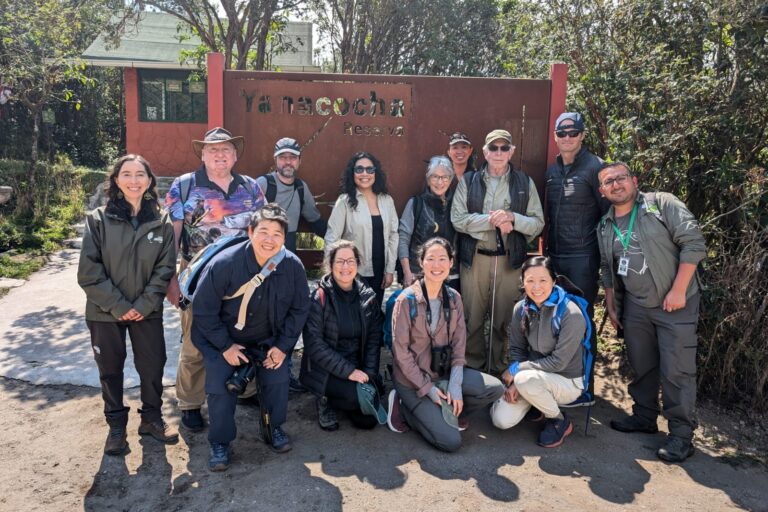
Mongabay: You’ve touched on this already, but what do you most enjoy about your work at Mongabay?
Maria Isabel Torres: One of the things I value most is the freedom to practice environmental journalism. That’s increasingly rare in today’s world.
We don’t just cover stories for clicks—we can dive into long-term, complex investigations, some of which take months or even a year to complete. That’s a privilege.
I also enjoy collaborating with some of the best journalists and outlets in the region. We believe in recognizing the strengths of our partners.
And I love that we have space to innovate—whether it’s through artificial intelligence, satellite data, or scientific tools. All of this contributes to building a more complete picture of environmental issues in Latin America, and I’m grateful to be part of it.
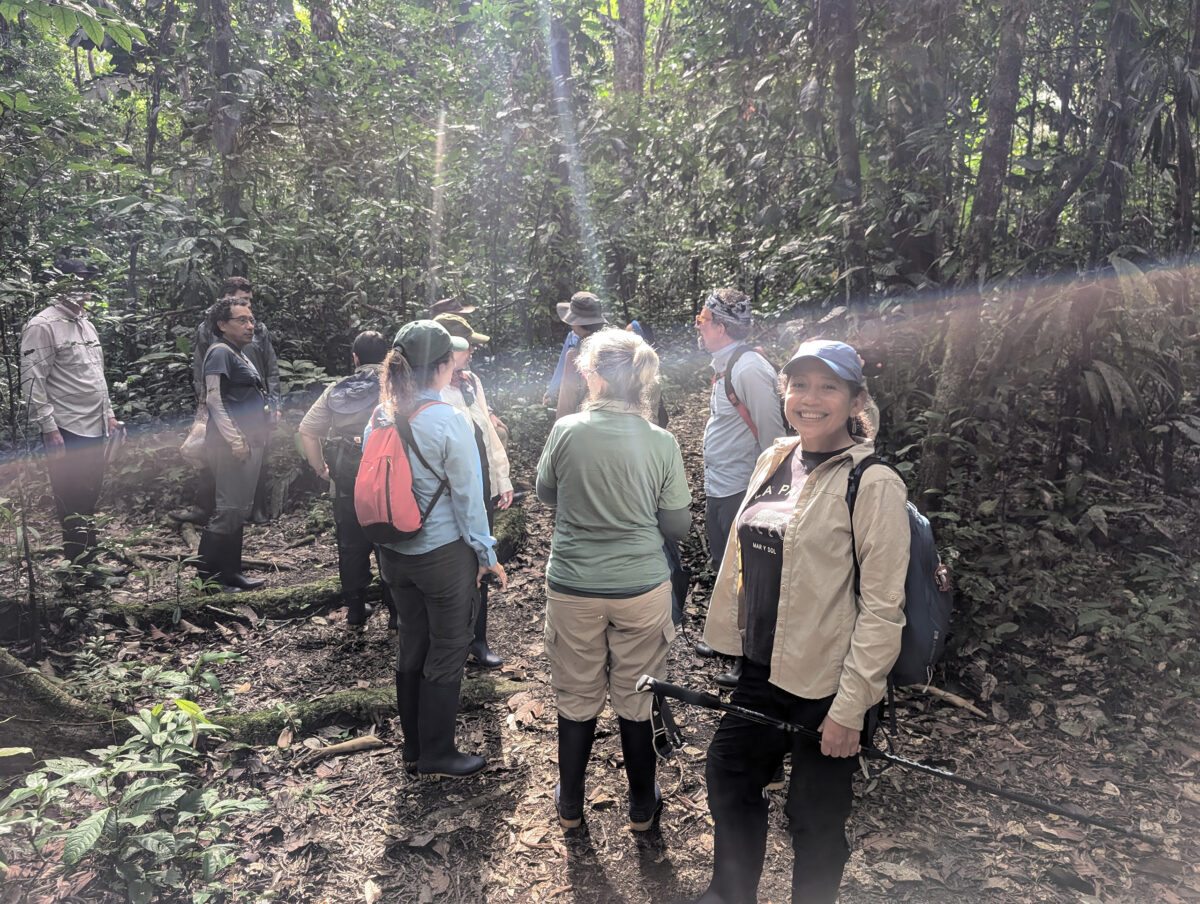
Mongabay: Why do you care about the issues that Mongabay Latam covers?
Maria Isabel Torres: One thing I always repeat—because it truly worries me—is that Latin America is currently the most dangerous region in the world to be an environmental defender. That reality underscores how important it is to cover environmental issues in this region.
There are people who are literally dying while trying to protect their territories and natural resources. There are powerful political and economic interests at stake. We’ve seen the rise of illegal economies and the expansion of organized crime into scientifically vital systems like the Amazon.
And in this context, Indigenous peoples and local communities are often the ones resisting, protecting their lands. Now more than ever, we need to shine a spotlight on these issues—not just the problems, but also the efforts people are making to defend their territories.
It’s vital to help amplify these voices and support the protection of natural resources, traditional knowledge, and cultural heritage. I think this is an area where most media outlets fall short, and that’s why I really care about Mongabay’s mission and work.
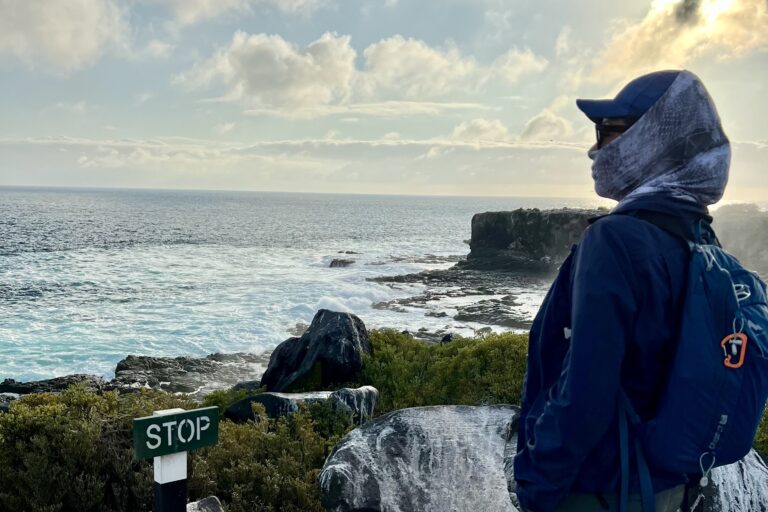
Mongabay: Getting a bit more personal now—what originally sparked your interest in the environment? Or did journalism come first, and the environment came later?
Maria Isabel Torres: My interest in environmental issues came later. As I mentioned earlier, my initial focus was politics—I was very engaged in understanding the political situation in my country.
When I started working at the Ministry of Environment, I began to understand how environmental issues were deeply linked to economic interests, geopolitical dynamics, and international negotiations.
Then, during my Master’s in Anthropology, I gained new tools to better analyze what was happening in the Amazon and other regions.
When the opportunity to join Mongabay appeared, it felt like a way to bring everything together—my journalistic skills, my political awareness, and my anthropological understanding.
At Mongabay Latam, we don’t just report on environmental conditions—we examine them from a political and cultural lens. For example, I always remember Indigenous leaders telling us they don’t want to be portrayed only as victims. They want to be shown as people who are resisting, organizing, and fighting for their rights. Mongabay gives us the space to tell these more complete, nuanced stories—and I believe that’s essential for understanding the full environmental context in Latin America.

Mongabay: What do you like to do in your free time?
Maria Isabel Torres: I’m lucky that my work allows me to travel, which I love. Journalism has given me the chance to explore my own country—from the coast to the Andes to the Amazon—and to meet people who live in and protect these ecosystems.
I’ve also traveled across Latin America, hearing stories and seeing firsthand how connected we are. For example, how Indigenous peoples in Colombia and Ecuador are tied to communities in Peru and Bolivia. These experiences have helped me understand how environmental issues cross borders, and how similar and different we all are at once.
Last year, I visited the Galápagos Islands—it was an incredible experience. The landscapes, the wildlife, swimming in those waters… it was unforgettable.
Outside of travel, I also love reading. I haven’t had as much time for it recently because of work and travel, but it’s something I really enjoy.
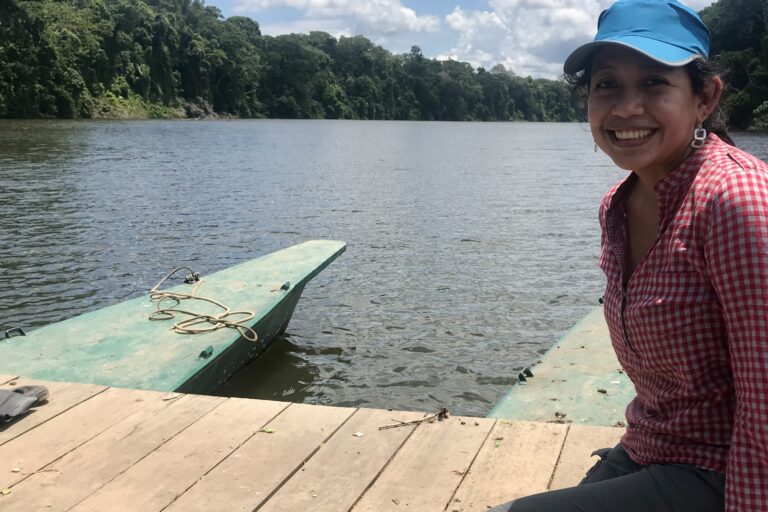
Mongabay: What motivates you?
Maria Isabel Torres: I’m motivated by learning. I always want to learn something new—whether it’s how audiences consume news, new research methodologies, or new ways to reach more people.
It motivates me to keep growing and to help the team grow. I also feel inspired when we see real-world impact from our work—when authorities respond to our stories, or when changes are made because of our investigations.
But even more than that, I feel deeply moved when people we’ve written about reach out to thank us. When someone tells us that our story gave visibility to their work or made them feel seen—that really keeps me going.
Those moments remind me that journalism, even when it feels small, can make a big difference in people’s lives.
Mongabay: What do you look for when building a team?
Maria Isabel Torres: Building the right team is one of the most difficult parts of running an office—especially one like ours, with team members from seven different countries.
First, I look at candidates’ experience as journalists and their understanding of environmental issues—not just in their own country, but across Latin America.
Then, perhaps most importantly, I focus on clearly explaining our expectations, values, and work ethic.
What I’ve learned is that it’s not just about hiring someone who is technically qualified—it’s also about finding someone who will thrive in our culture and who feels fulfilled in the role. It has to be a mutually positive relationship, where both sides are happy and aligned.
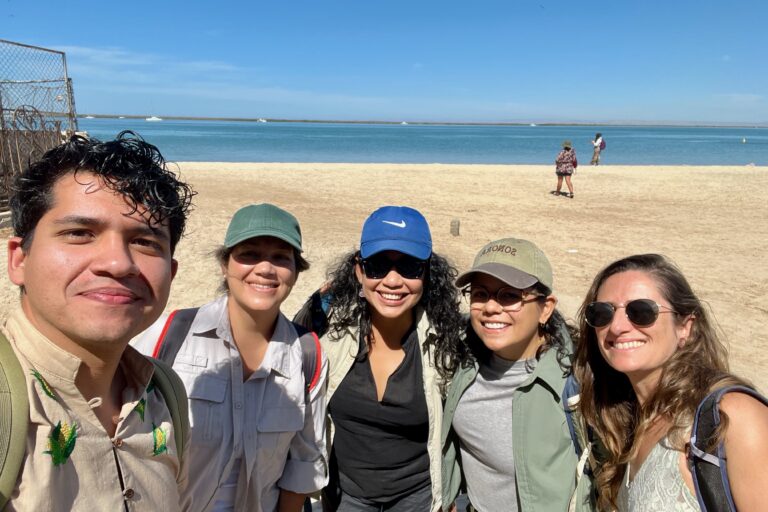
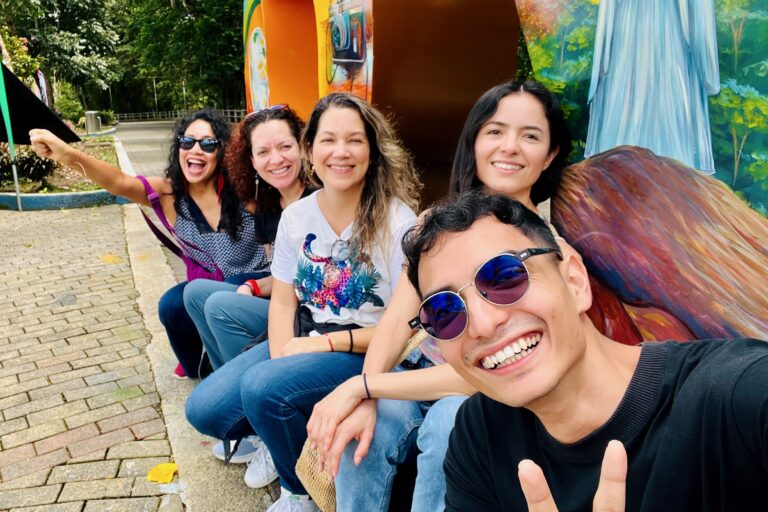
Mongabay: What are some of the lessons you’ve learned since starting Mongabay Latam?
Maria Isabel Torres: One of the most important things I’ve learned is that journalism is evolving. Today, we place much more emphasis on collaborative journalism and understanding our context through transnational reporting.
Independent media outlets are working together—not only on investigations, but also on security issues, shared budgets, and joint projects. At Mongabay Latam, we’ve adopted this networked approach, collaborating with other independent newsrooms when possible. That’s worked really well for us.
Journalists today need to learn how to work as a team. That’s a crucial skill in this environment.
Another lesson has been learning how to reach our audience through the right formats. It’s not enough to publish a great investigation with lots of sources. We also need to think about how to adapt that content to different audiences—people who prefer videos, infographics, podcasts, or shorter articles.
There’s growing interest in environmental issues, but we need to meet people where they are and capture their attention in ways that resonate. That’s something we’re working to improve and put into practice.
I’ve also learned the importance of balancing our coverage. As an investigative journalist, my instinct is often to focus on exposing problems—corruption, environmental crimes, injustice.
But we also recognize that many people are experiencing burnout. These stories can be overwhelming, and audiences may tune them out. So we’ve increasingly embraced a solutions journalism approach at Mongabay Latam—and across Mongabay more broadly—highlighting projects and initiatives that are working.
We’ve seen that this kind of storytelling helps people feel more optimistic and engaged, even amid very difficult realities. That balance in coverage is essential.
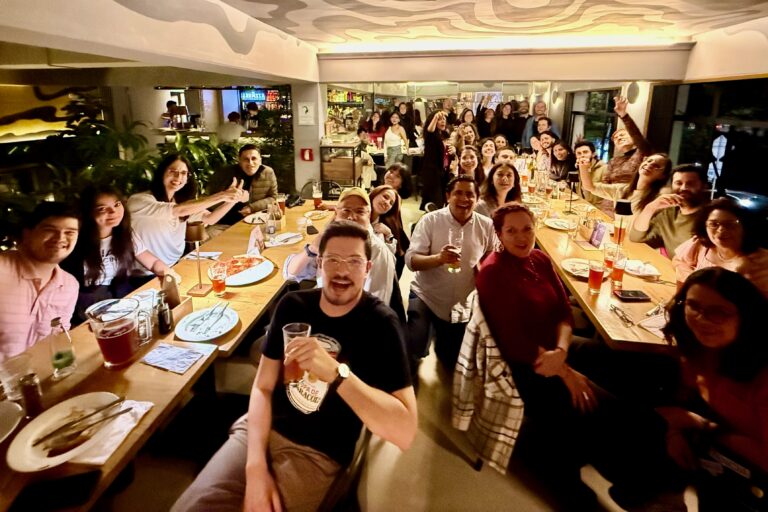
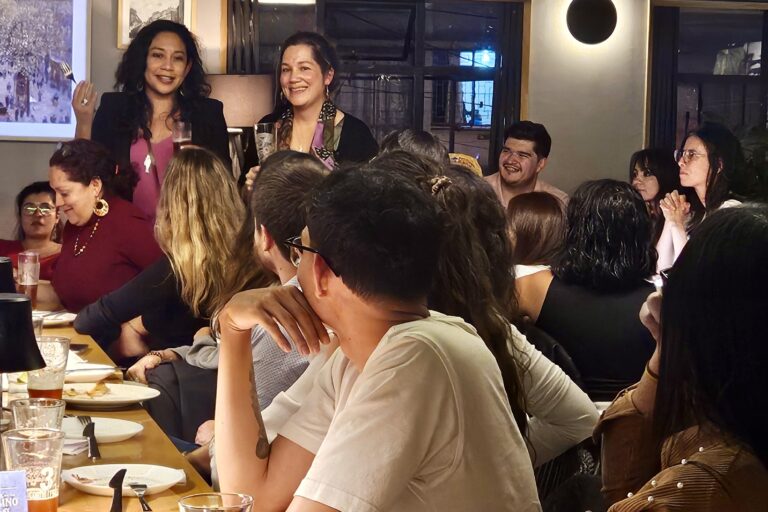
Mongabay:Is there any advice you’d give to someone who wants to follow a similar path to yours?
Maria Isabel Torres: Yes, I’d break that into two parts.
First, for someone leading a media organization, I think it’s essential to focus on your team. Give people the confidence and support they need to succeed—not just for the sake of the organization, but for their own personal and professional growth.
When your team members are thriving, your organization will thrive too. That’s something I’ve really learned through experience.
Second, for journalists: take the job seriously. We have a responsibility to our audience because we’re telling stories that matter. Be rigorous with your sources, be empathetic, be respectful.
One of the most important assets a journalist has is their network of sources. A strong, diverse, and inclusive network reflects the kind of professional you are and how you’ve approached your work over time.
So be serious about the craft and respectful of the people who trust you with their stories.
Mongabay:You’ve become a prominent leader as the head of Mongabay Latam. Do you have any reflections on leadership?
Maria Isabel Torres: Leadership is a serious responsibility, and I see it as an ongoing process. It’s not just about your individual skills as a journalist—it’s also about how you use those skills to support your team, to help them grow individually and collectively.
It’s also personally meaningful to me because women are still underrepresented in leadership positions in the media. I really value the opportunity to sit down with other women journalists and talk about the challenges we’ve faced—and how we’ve managed to succeed despite them.
Media has long been a tough space for women, so I see my role as a chance to make the path a little smoother for others. That includes amplifying the voices of women in science, Indigenous women leaders, and women working in the field.
It’s part of my personal mission and something I carry with me in this position.
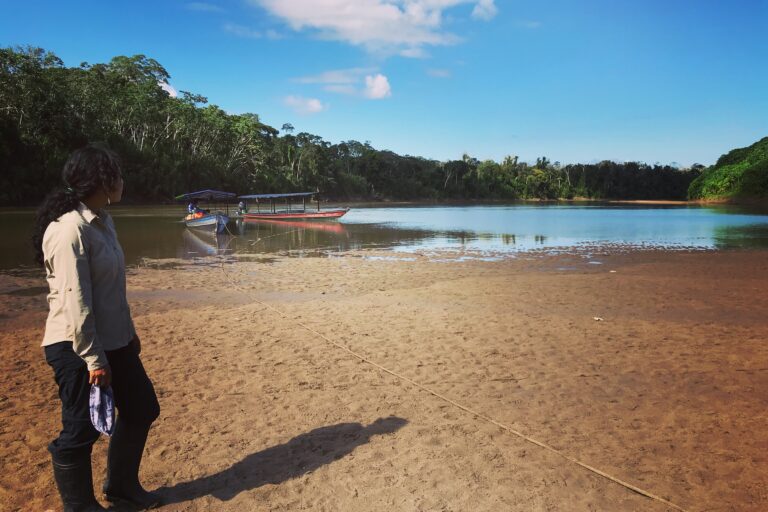
Mongabay: What’s on your mind for the future?
Maria Isabel Torres: This journey with Mongabay has been incredible. Sometimes I reflect on how difficult journalism can be in Latin America—in some countries, it’s not just hard, it’s dangerous.
Given the context we’re operating in, it’s likely to get even more challenging. That’s why I’m so proud that we’ve created a space at Mongabay where journalists feel safe, where they can publish independently and know they’ll be supported if any issues arise.
I’m proud that we’re giving people the opportunity to practice journalism the way it should be practiced.
Looking ahead, we’ll be celebrating 10 years of Mongabay Latam next year. We’re planning a party, of course—but we’re also thinking about the next set of challenges.
How can we improve? How can we innovate? How can we continue to produce better journalism?
Those are the questions guiding us as we look to the future.
Header image: Torres in the Amazon..




